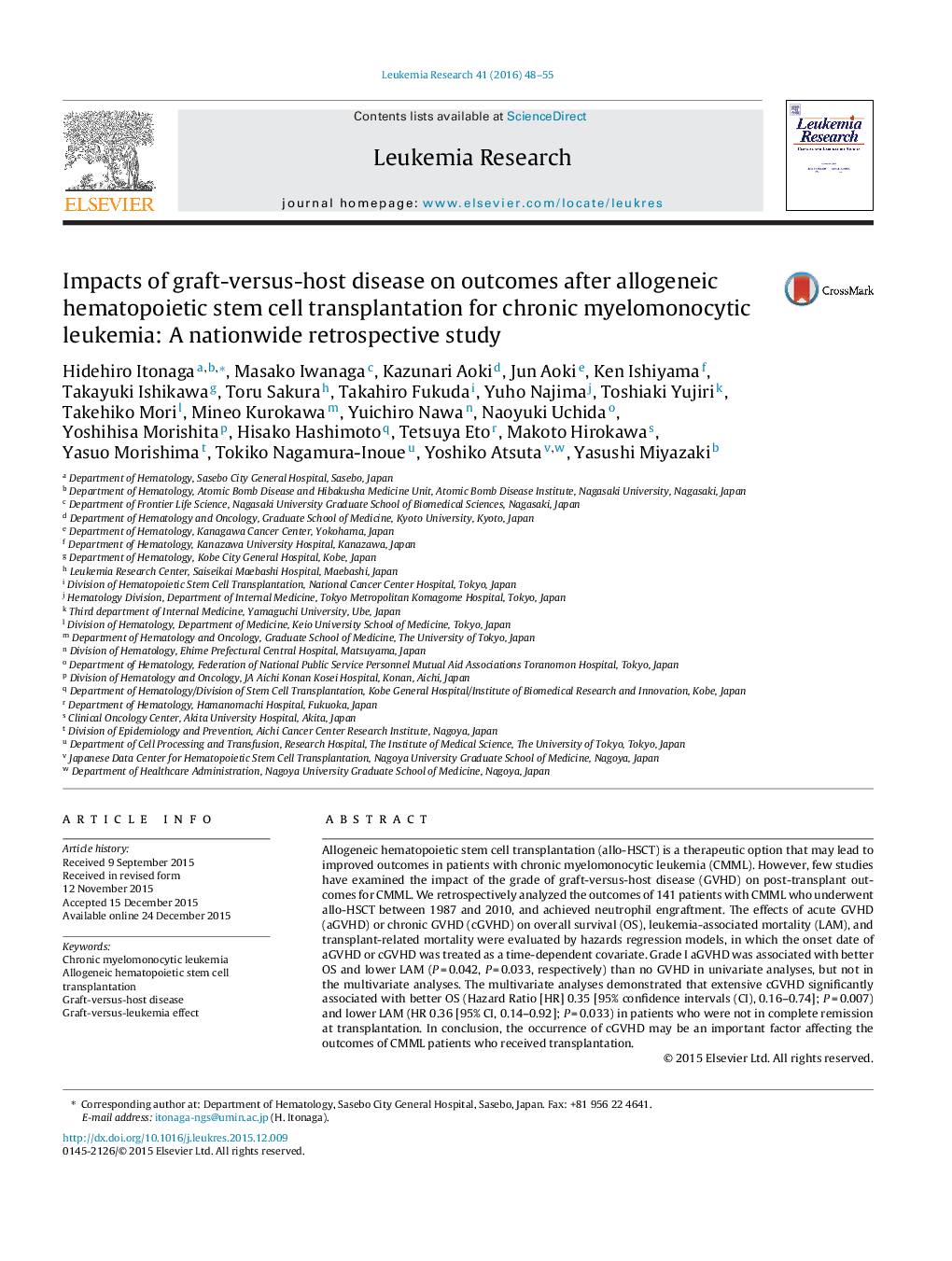| Article ID | Journal | Published Year | Pages | File Type |
|---|---|---|---|---|
| 2136481 | Leukemia Research | 2016 | 8 Pages |
•The aim of the present study was to determine the impacts of GVHD on post-transplant outcome for CMML.•Chronic GVHD was associated with better survival and lower incidence of death after relapse.•It suggested that a graft-versus-leukemia reaction contributed to the suppression of relapse.
Allogeneic hematopoietic stem cell transplantation (allo-HSCT) is a therapeutic option that may lead to improved outcomes in patients with chronic myelomonocytic leukemia (CMML). However, few studies have examined the impact of the grade of graft-versus-host disease (GVHD) on post-transplant outcomes for CMML. We retrospectively analyzed the outcomes of 141 patients with CMML who underwent allo-HSCT between 1987 and 2010, and achieved neutrophil engraftment. The effects of acute GVHD (aGVHD) or chronic GVHD (cGVHD) on overall survival (OS), leukemia-associated mortality (LAM), and transplant-related mortality were evaluated by hazards regression models, in which the onset date of aGVHD or cGVHD was treated as a time-dependent covariate. Grade I aGVHD was associated with better OS and lower LAM (P = 0.042, P = 0.033, respectively) than no GVHD in univariate analyses, but not in the multivariate analyses. The multivariate analyses demonstrated that extensive cGVHD significantly associated with better OS (Hazard Ratio [HR] 0.35 [95% confidence intervals (CI), 0.16–0.74]; P = 0.007) and lower LAM (HR 0.36 [95% CI, 0.14–0.92]; P = 0.033) in patients who were not in complete remission at transplantation. In conclusion, the occurrence of cGVHD may be an important factor affecting the outcomes of CMML patients who received transplantation.
